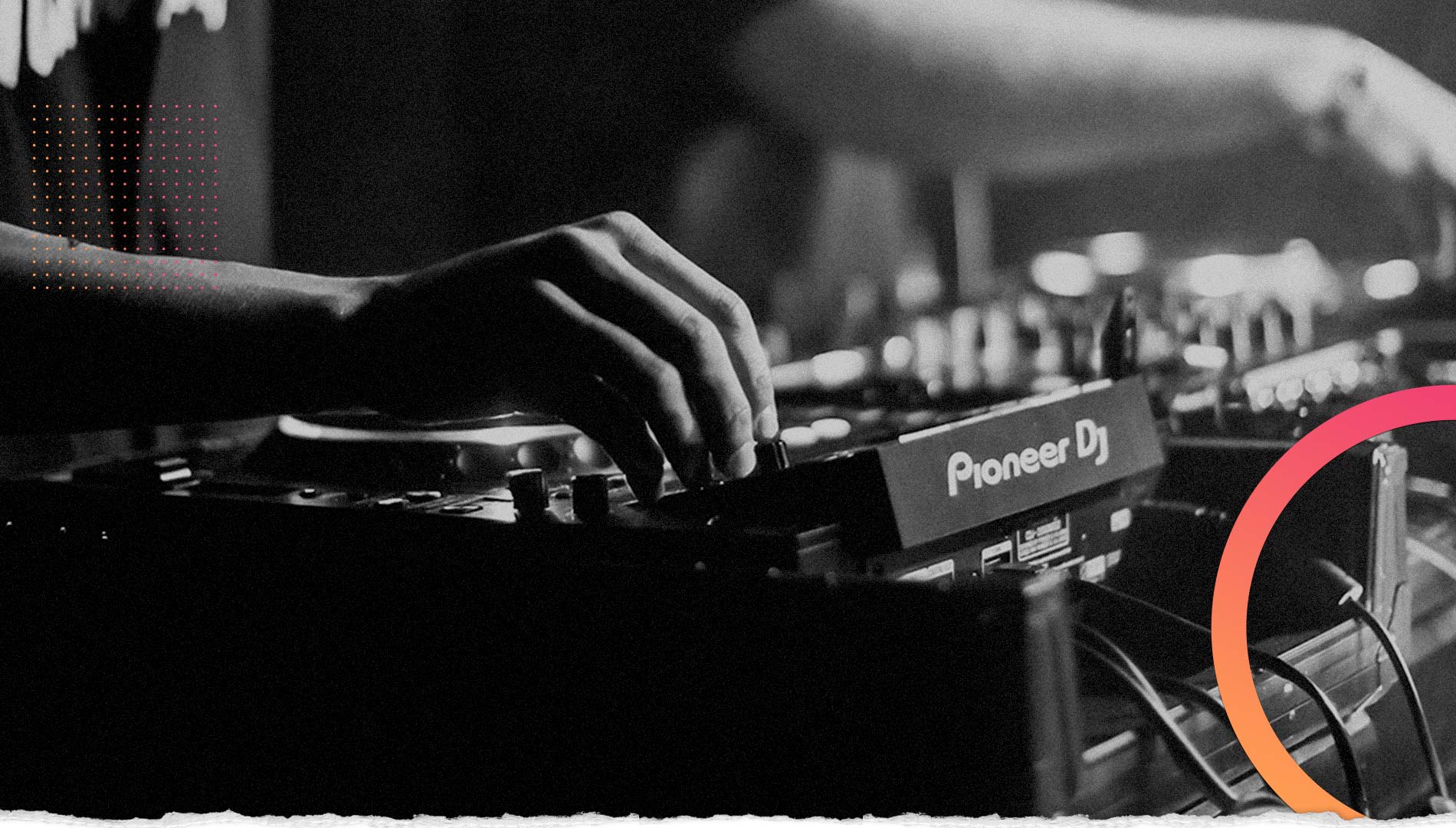When Claddagh Records co-founder and creative force Garech Browne was in his teens in the mid-50s he studied French at the Berlitz School in Paris.
Although both wilful and ill-disciplined – the aristocratic son of Dominick Browne, the 4th Baron Oranmore and Browne, had ran away from boarding schools in Switzerland and England and ended his formal education at 15 – he could see how a facility in French might be advantageous, especially for the high society life he was enjoying in the City of Light.
Garech was being put up in an apartment owned by his mother, wealthy heiress and socialite Oonagh Guinness, the youngest of three sisters who became known in the 1920s and beyond as the “Golden Guinness Girls”.
One of Browne’s Berlitz teachers was from Brittany. “He asked me about Ireland and I was unable to answer most of his questions,” Garech confesses in a new book published this week on his life – Browne died in 2018, at the age of 78 – and “quest to preserve Ireland’s musical and spoken-word heritage”. “I think it was then I decided that I really should know more about my country.”
Browne was born in Glenmaroon, the Guinness’s house in Dublin, but he mostly grew up in Luggala, a magnificent 18th-century hunting lodge on a 5,000-acre estate in the Wicklow Mountains gifted to his mother. It was here that Oonagh staged artistic salons and riotous parties, especially in the Swinging Sixties, and Garech and his younger brother Tara “were allowed to roam free at all hours”.
Garech also spent much of his childhood at Castle MacGarrett in Co Mayo, where his father had inherited a large demesne – and where Garech had a formative early experience at one of the dances for the estate workers. “I can remember dancing to Irish music at around the age of three. It is one of my earliest and most vivid memories,” he says.
Garech Browne with singer and musician Margaret Barry.
In his early teens Browne had also begun to listen to the Irish traditional music broadcasts on Radio Éireann of folklorist Ciarán Mac Mathúna and, on returning to Ireland, he resolved to learn more about his country’s indigenous music. Through family connections he got to meet Mac Mathúna and to accompany him as he travelled around the country recording musicians singing and playing in private houses and local pubs.
James Morrissey, the author of Real to Reel: Garech Browne & Claddagh Records, writes that “Garech’s early life was largely devoid of any semblance of routine or structure”, but the combined efforts of a Breton educator and an Irish music collector forced Browne to focus. He had found his vocation, his life’s work.
“I felt that Ireland had such a rich cultural history, especially in music and the spoken word,” says Browne in Real to Reel. “In the 50s and 60s young people were turning their backs on all of this. Pop music was taking over the world. We were about to lose our heritage; it was disappearing.”
Buying a Grundig tape recorder and enlisting the support of his brother, Browne started to make his own field recordings; on his second ever trip, to Miltown Malbay, he met master uilleann piper Willie Clancy. Garech and his friend Ivor Browne (no relation), the radical psychiatrist who had recently qualified as a doctor, also began lessons on the pipes with another great virtuoso, Leo Rowsome.
Frustrated that there seemed to be little recognition of Rowsome’s artistry and that no record company in Ireland or abroad appeared to be interested in releasing an LP of his music, Garech and Ivor cajoled poet John Montague, among others, and remarkably £500 (around €15,000 today) was raised for the project. In 1959 they launched Claddagh Records with Leo Rowsome’s Rí na bPíobairí – The King of Pipers.
Five years later Garech further underscored Claddagh’s very singular aesthetic by persuading poet Patrick Kavanagh, then in his early 60s, to record Almost Everything, a selection of his poetry and autobiographical prose, read crucially in his own voice.
 A young Garech Browne dancing at a party at Luggala.
A young Garech Browne dancing at a party at Luggala.
As Morrissey writes in Real to Reel, Browne and the project were “met with considerable incredulity in Dublin literary circles”. Garech, however, was used to such suspicion and resistance; around that time, for example, future President Erskine Childers upbraided Browne for recording “squealing pipes and old women wailing songs by the hearthside, when it’s an image of a modern Ireland that we want to present to the world”.
Browne’s extreme privilege and posh accent meant that many readily dismissed him as a dilettante and fake. Perhaps his dandy-Irish appearance didn’t help; he had flowing hair, wore báinín jumpers and sported tweed trousers held up by a crios – later he would adopt a ponytail tied with a velvet ribbon and his signature straggly beard.
Despite such scepticism and opposition, Garech’s passion, commitment, knowledge and, no doubt, resources often seemed to win people over. The reviews for Almost Everything were fulsome, as they were for the Rowsome record, and over the next 50 years or more Browne continued to defy expectations, champion Irish artists and challenge the tenor of the times.
Perhaps most famously and successfully, Claddagh released the first six LPs by the Chieftains, but its rich roster of Irish musicians also included Tommy Potts, Liam O’Flynn, Dolly MacMahon, Matt Molloy, Dolores Keane and Derek Bell. Browne also encouraged his close friend, the composer Seán Ó Riada, to record a programme of Irish dance music, song airs and classical pieces on the harpsichord at Luggala; Ó Riada’s Farewell was released posthumously in 1972.
Irish poets who recorded spoken-word albums for the label included Seamus Heaney, Derek Mahon, Austin Clarke and John Montague himself (English poets Ted Hughes and Robert Graves also recited their work for the label). In 1966 Samuel Beckett supervised a recording in London of extracts from his plays and novels read by the actor Jack MacGowran; that same year, to mark the 50th anniversary of the Easter Rising, Claddagh released Rebel Irishwomen, a series of 1916 recollections by Helena Molony, Kathleen Behan and Maud Gonne McBride.
Browne was fastidious about presenting the records to the highest standards and in the most visually arresting way; as well as overseeing the overall design and art direction of the LPs, Garech commissioned work and licensed images for Claddagh album covers from artists such as Louis le Brocquy, Patrick Scott, Edward Delaney and Barrie Cooke.
 Garech Browne, on right, with Mick Jagger and Jerry Hall at the Red Ball in Paris, in 1980.
Garech Browne, on right, with Mick Jagger and Jerry Hall at the Red Ball in Paris, in 1980.
While the large-format, 228-page book concentrates primarily on the music – Real to Reel also includes Masters of Their Craft, a Claddagh compilation LP of 17 remastered tracks of both music and spoken word recordings, plus a poster, all contained in a rigid slipcase – Morrissey also provides a carefully constructed portrait of the man who made it all possible.
The author of a wide range of books on subjects such as whiskey, beekeeping and the Fastnet Lighthouse, Morrissey is a former business journalist turned PR consultant (his clients include Denis O’Brien) who offers a partial if colourful and occasionally personal account of Browne’s extraordinary life.
Real to Reel is not a critical biography or comprehensive history; it’s more a compendium of assorted Garech Browne stories, memories, characters and collaborators.
“The book is a bit like drawing back the curtains and opening a window,” says Morrissey. “It’s about one particular aspect – Garech’s devotion, obsession and drive. A definitive biography would have to open a lot more windows and doors.”
Yet the book is far from hagiographical: Browne’s faults, from irascibility to pathological lateness, are clearly spelt out, as are his often reckless profligacy – especially after his mother bestowed Luggala to him in 1970 and he enthusiastically embraced its tradition of extravagant parties – and the substantial losses the label continually battled against, and Garech offset.
“Claddagh Records was a precarious project which defied business norms, and Garech loved it all the more for that,” writes Morrissey. “The unspoken word was that he would provide financial assistance so that Claddagh could achieve its objectives.”
There is a good deal of sadness and loneliness in Browne’s story too. His popular party-going brother Tara, to whom Garech was very close, died in a car crash in London in 1966; he was just 21 (the tragic accident was immortalised by The Beatles in ‘A Day in the Life’).
“Tara’s death haunted Garech for the rest of his days,” says Morrissey. “And it certainly demolishes the myth that wealth is the answer to everything.”
 Real to Reel: Garech Browne & Claddagh Records, by James Morrissey
Real to Reel: Garech Browne & Claddagh Records, by James Morrissey
In the last decade or more of his life, when he was drinking too much (mostly champagne) and lived apart from his Indian wife, Princess Harshad Purna Devi Jadeja of Morvi (more usually “Purna”), who had moved back East, Browne could cut a somewhat solitary (the couple had no children) and melancholic figure. As Paul Howard, who wrote a biography of Tara, pointed out, “after the parties, everyone goes home”.
Morrissey describes Browne as “a good old-fashioned cacophony of contradictions”. He could appear loquacious, gregarious, even brash, yet he was also socially awkward – his friend Mary Finnegan describes him as “the shyest extrovert I’ve ever known”. He was dogged and determined when it came to Claddagh, yet he could also be a debilitating procrastinator and perfectionist.
“He thrived on a combination of chaos, conflict and creativity; he could be as erratic as he was eccentric,” writes Morrissey. Even his name pulled in different directions: he referred to himself as either Garech Browne or de Brún or a Brún and as Honourable or Onórach.
After Browne’s death Morrissey and others came together to see if they could honour Garech’s work by reviving Claddagh Records. A five-year global licensing agreement was signed with Universal Music Ireland in 2021, and more than 300 historic recordings, some of which have never been released, are being digitised and remastered.
Patrick Kavanagh’s Almost Everything was reissued last year, with a sister album featuring the poet’s work read by President Higgins, Bono, Jessie Buckley, Liam Neeson and Imelda May, among others. Recently Claddagh signed ØXN (pronounced “oxen”), a “doom folk” quartet featuring Lankum vocalist and multi-instrumentalist Radie Peat; it’s the first time a band has joined the label since 2005.
“To look into the future, you’ve got to first know your past, and I want Real to Reel to be a celebration of Garech’s unique life, legacy and contribution,” says Morrissey. “But with Claddagh, we’re achieving nothing if all we’re doing is remastering and releasing old tapes. Like Garech did, we must grow the culture and add something new.”
- Real to Reel: Garech Browne & Claddagh Records is published on 29 September priced €99.95 and is available from selected bookstores and record shops or direct (with free shipping in Ireland) via claddaghrecords.com
 Garech Browne and Seán Ó Riada.
Garech Browne and Seán Ó Riada.
Co Cork composer and musician Peadar Ó Riada remembers Garech Browne and his relationship with his father, Seán Ó Riada, who died in 1971 at the age of just 40.
“Garech was a very educated man with an inquisitive mind and a broad interest in the arts and culture – a lot of his knowledge he taught himself – and Claddagh was a reflection of those interests. It was his public voice really.
“He worked on a very broad canvas – Garech wasn’t in any artistic cul-de-sac or ghetto; everything was interconnected – and Ireland is by far the richer for having had him and Claddagh Records. He held the line when everything was being dissipated. He kept us in touch with what was important about who we were. He understood that, like today, a culture must always be connected to its roots.
“Garech didn’t have inhibitions. He always dressed how he felt like dressing, not how other people wanted or expected him to dress. He loved tweed and woollens because he said they were natural indigenous products.
“Garech loved my father’s traditional music, but he was always pushing him to compose more classical pieces. He was ambitious for him. That’s why Seán’s LP Vertical Man was recorded with the best string section at the time [1969], that of the London Philharmonic.
“I suppose the greatest thing about Garech was that he was full of, what we’d say in Irish, grámhar; he was very loving. He was a one-off, he had a heart of gold, and he loved his indigenous culture.
“He loved people too. Including Seán. My family’s relationship with Garech was based on the thrill of discovering new knowledge and creativity – and on love and affection. I remember with Garech and Seán there was always a lot of laughter.”
 Bono shares his warm memories of Browne in the Real to Reel book.
Bono shares his warm memories of Browne in the Real to Reel book.
“One of the first times I met Garech was on a flight from New York to Dublin. I’m embarrassed to say I knew very little about traditional music in Ireland. It was another world to us; we were from Ballymun and Finglas. Maybe Larry did because he played in the Artane Boys Band.”
Later, Bono visited Luggala. “It was amazing to sit with Garech and hear him talk about great Irish pipers and harpists. I realised he had woken me up to something… “If it wasn’t for the field recordings of Alan and John Lomax, I’m not sure that rock and roll would have happened. If it wasn’t for Muddy Waters, there’d be no ‘Rollin’ Stone’ or the Rolling Stones. The importance of turning on these recordings for a whole new generation was immense.
“You know, what Garech was doing with Claddagh was to preserve melodies that might never have been heard again. That makes them just as important as the Lomax recordings… The Claddagh material is priceless.
“Garech saw himself as protecting our music for us. It gave him a sense of purpose. His library too was incredible. Words and music: they were the most important things in his life.”











